This article is an excerpt from the award-winning book, The Evolution of an Entrepreneur.
“Veteran entrepreneurs are America’s most untapped and highly skilled economic development resource that we should immediately start empowering.” – Jack Nadel
Since the beginning of my career, I have been creating and refining what I call the “Nadel Method,” outlining five steps aimed at providing a clear process for business success. After nearly 70 years of business experience, I am confident that entrepreneurs from all backgrounds, industries and levels of business knowledge can utilize The Nadel Method, outlined below, and included as a section in my latest book, The Evolution of an Entrepreneur, featuring 50 of my best tips for surviving and thriving in business.
STEP 1: Identify a Business Idea You Love
A few years back, I was teaching a business course at the University of California, Santa Barbara. One of the first questions I was asked was, “What is the right business today for me to be in?” My answer to this question is always, “What is it that you really love to do?” This is the first question you must answer; then you find a way to turn what you love to do into a business. When you make this choice about your career, however, you must clearly understand your strengths and weaknesses. There is a difference between a wish and a goal. A wish might be to play point guard for the Lakers. An achievable goal might be to work with an NBA team in their marketing or sales department or to become a supplier to an NBA venue or retail outlet.
STEP 2: Ask the Right Questions as You Research
OK, you have pinpointed a new business. Understand that if it is a good idea, the odds are that someone has thought of it before you. This fact should not necessarily discourage you, but it is imperative that you research what they did, how they did it, and how you can do it better. Before you spend a dollar or many hours of your time, you must use logical thinking to get answers to some very precise questions. First, is your business idea a product or a service? If it is a product, what other products in the marketplace are the same or similar? If it is a service, who else is performing this service, and is it being done successfully? How big is the market?
How fortunate we are that much of what we want to know is accessible right on our computers or even on our mobile devices. I remember one budding entrepreneur who came to me for advice on how to make his newly created business really work. I asked him if anybody was already putting his idea to use or attempting to develop it. He replied, “Absolutely no one has done it … isn’t that amazing?” I immediately went to my computer; a number of different companies were doing everything he had talked about. Yet this person had spent a great deal of money on proposals and trying to raise capital. This is one of the first things you have to know. It is not easy to raise capital on an idea that you have not investigated thoroughly. Thousands of people come up with millions of ideas. But they have nothing until they have proven that an idea can work.
STEP 3: Plan a Deal and Focus on the Details
At this point, you are ready for the first phase in structuring a deal and creating a business plan around it. (Note that the Nadel Method uses the term business plan to indicate the steps required to execute a particular deal. Also, the advice presented applies to any deal in the life of your business, not only to the first one.) Just as an athlete needs to condition his or her body to go into competition, you must likewise condition your mind to engage in business. The Nadel Method is based on the ability to think in terms of a particular situation and react to it in a specific time frame. An entrepreneur must learn to conceptualize in a highly focused way, with an emphasis on market demand and profit potential. Asking and answering questions is an ongoing part of this process. What tools are available to expedite your plan? How will you make the best use of them? How will you transition from proposing a deal to making a concrete business plan? Remember, the business plan has to tell you not only how to execute the deal, but how to do it profitably.
Visualize the steps you will have to go through to carry out the deal. I mean really go through them in your mind, step by step and meeting by meeting. Imagine that you are watching a video as you mentally go through the motions of completing a plan and making a deal happen. You write the script, and you are the star.
This process can take any amount of time. You should not put restrictions on it because it sets you on the right track and may save you from many mistakes. Take a totally optimistic view: Everything goes right, happening just as you had planned. In your mind, see the deal as it’s made. Now sit back for a moment and ask yourself how you feel. Are you thrilled with the deal, or are you disappointed? I have gone through this visualization many times and occasionally felt at the end that I was really not happy with the results.
Remember, you went through this process as if everything transpired perfectly, which it never does. If you do not feel good about the deal, do not even start it. If you love where you are after the deal is completed successfully in your mind, you can go on to the next phase: putting your business plan on paper. Compare this process to a football team going up against a tough opponent (the deal). The coach must prepare a game plan that the team reviews many times before the opening kickoff (the business plan).
Now that the stage has been set mentally, you must be determined to start making good things happen. Every vocation requires a distinct mindset. A philosopher thinks in abstractions, while an engineer imagines the way things work. A comedian searches for humor in every situation, while an entrepreneur thinks in specifics with laser-like precision. Business details can be tiny, in the form of millimeters, pennies or subtle shades of color. As an entrepreneur, you have to know that stress is guaranteed. You must have a genuine passion for success in order to manage the frustrations of the journey.
Here are examples of questions to keep in mind as you put together a deal and craft a business plan:
- Have you determined your distribution channel?
- How big an investment do you need in order to accomplish your goals? Will you require outside financing?
- Is your time frame flexible enough to allow for unexpected delays?
- Are you dealing with a patent or a brand name for your product, or are you just going to enter the marketplace and let the chips fall where they may?
- What is it going to cost to make your product? What is the minimum you must produce and sell to ensure a profit?
- What do you have to do to produce a superior product at a better price than your competitors?
- Is your profit margin large enough to sustain steady growth?
STEP 4: Fulfill Your Agreement and Then Some
This is the all-important point where you execute the deal, and you must always be prepared to make course corrections along the way. It is almost impossible to anticipate all the problems and all the opportunities that will present themselves by virtue of your being in the marketplace. You must keep your ego out of it and make changes in accordance with the unanticipated conditions that present themselves. Never stop thinking of how you can improve your deal. In entering any new venture, always hope for the best but prepare for the worst.
Another rule of the Nadel Method is to document in writing every agreement or important conversation with suppliers and customers. You may think you have a deal, but the people with whom you are conducting business may not have the same understanding of what was said. You must get in the habit of confirming everything in writing. It’s not that you expect problems or dishonesty, but you must protect yourself and your venture at all times by documenting your agreements.
STEP 5: Review the Results for Next Time
The final step of the Nadel Method is simple but vital. It involves reflection. As your business plan reaches its conclusion, it’s time to take stock. Think about this entire experience, so that you can build on it to create your next deal. There are questions you need to consider.
Have you achieved what you set out to do? Are you still excited about your role as an entrepreneur? Did you respond to unexpected modifications in a timely manner? How and where will you use this recent experience to structure an even bigger deal?
The Nadel Method stresses the importance of careful planning and great execution. The advantage of the veteran entrepreneur is that he or she is flexible enough to change course if necessary to make a business work. With the Nadel Method, you must never stop thinking creatively. Be prepared to add and subtract from your original plan. The more you evaluate through a critical lens, the more you will be able to spot the adjustments and corrections you need to make.
About the Author
Jack Nadel is a decorated veteran of World War II. He is an international hall of fame entrepreneur and award-winning author who has founded, acquired and operated a dozen successful companies. You can find him on twitter @JackNadel and read his latest book, The Evolution of an Entrepreneur.
Additional Reading
After you finish The Evolution of an Entrepreneur, here are a list of books to read before you even think of starting a veteran-owned business.
G.I. Jobs Staff Picks:
- The Lean Startup
- Zero to One
- The Hard Thing about Hard Things
- Innovators Dilemma
- Team of Teams
- Traction
- Do More Faster
- Predictable Revenue
- Good to Great
Free Course
Also, check out Steve Blank’s Udacity course here. It is self-paced and takes less than a month. He is an Air Force veteran and legend in the startup world.
P.S. Check out our 15 Hot Franchises for Veterans: 2016 Edition if you want to go the franchise route.
READ NEXT: 8 Ways To Fund Your Veteran-Owned Start-Up





